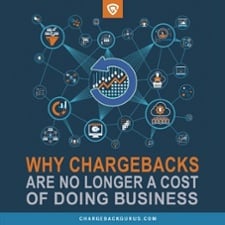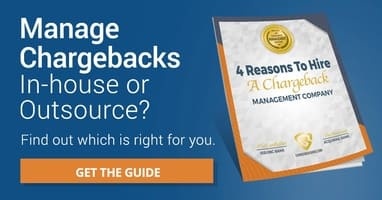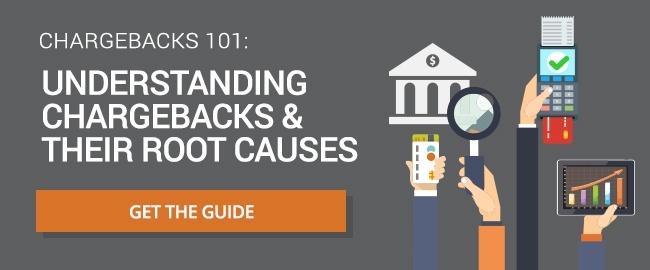How to Open a Dispute on Paypal
PayPal has come a long way since the days when it first arrived on the eCommerce scene, back when eBay buyers were still mailing paper checks to sellers. Today, they offer a wide range of merchant services, including functioning as a payment processor and an acquirer. Familiarity and convenience are what draw many merchants to PayPal, but one of its biggest advantages is the PayPal Resolution Center, which is designed to resolve merchant disputes without involving the customer's issuing bank. In other words, it helps merchants avoid chargebacks. How can merchants make best use of the PayPal Resolution Center to keep their customers happy and protect their revenue? The PayPal Resolution Center is located within PayPal's website and serves as a place where buyers can resolve issues with their account or transactions, such as: Even when a dispute is filed and PayPal sides with the buyer, it's a much better outcome than getting hit with a chargeback. PayPal disputes don't affect your chargeback ratio—the rate of chargebacks to transactions that payment processors use to determine how "high risk" you are. However, PayPal does charge a dispute fee of up to $20 per transaction. While recovering a sale is always the preferable outcome, and a merchant-initiated refund is the next best thing, a PayPal transaction reversal is still less damaging than a chargeback. PayPal's website makes clear to buyers that the dispute process is only for orders which never arrived, arrived damaged, or were misrepresented by the seller. As PayPal puts it, they "don't cover buyer's remorse." While this won't stop all customers from filing disputes over purchases that were received as ordered, clear communication about what disputes should and shouldn't be used for can help reduce these cases. The first thing that happens when a buyer goes to report a transaction issue at the Resolution Center is that PayPal will have them communicate directly with the seller to attempt to resolve the issue directly. If you're the seller on the receiving end of a Resolution Center message, this is a great opportunity to figure out what will satisfy the buyer and give it to them. Usually, a refund or a replacement product is all it takes, and that's a small price to pay to keep a customer happy and avoid the hassle of a dispute and the cost of PayPal's dispute fee. When the buyer and seller cannot reach an agreement, the buyer can escalate the dispute. PayPal will take the transaction amount back from the seller until they adjudicate the matter. PayPal will investigate the transaction and may ask for additional information from both parties. Once they reach a decision, they will return the held funds to the victorious party. Buyers who use their credit cards to fund their PayPal account still have the ability to call their issuing bank and dispute their credit card transaction with PayPal. When this occurs, PayPal will determine which transaction the chargeback relates to, debit the seller's account, and open a dispute in the PayPal Resolution Center. At this point, the seller will have 10 days to submit evidence that the chargeback should be reversed. PayPal may then attempt to represent the charge along with the seller's evidence. If they beat the chargeback, they will return the seller's funds. When merchants process online payments through PayPal, it functions as a shield that absorbs all of the actual chargeback activity when disputes occur. This is not to say that PayPal chargebacks are harmless, simply that they protect merchants from the consequences of an excessive chargeback ratio, like the unpredictably rising fees of a high risk payment processor. Because PayPal's buyers and sellers share the same platform, it's easy for PayPal to put them directly in contact with each other when disagreements crop up. By facilitating communication, they increase the odds that a mutually agreeable solution can be reached. Lastly, while buyers can dispute PayPal transactions with their bank if they used a bank card to make the purchase, they cannot do this if they used PayPal funds or PayPal Credit—the PayPal Resolution Center is their only option. PayPal Seller Protection is a program offered at no charge to all sellers who qualify. Qualified sellers must have a business account with PayPal, must be located in the United States, must be selling tangible physical goods, and must meet certain other shipment and transaction criteria. The program protects seller from liability for two dispute categories: While not every merchant will qualify for PayPal Seller Protection, it really is a nice benefit that allows for some peace of mind regarding the ever-present threats of online fraud and package theft. Just make sure you follow their requirements carefully and save all necessary shipping and delivery information they ask for. In terms of filling the roles otherwise filled by an assorted array of banks and processors PayPal has a lot to offer merchants. The PayPal Resolution Center is significant for its streamlined, common sense approach to the dispute process that puts communication at the forefront. PayPal is often seen as more buyer-sided that most payment platforms, with generous buyer protections and long deadlines for filing disputes. In fact, these buyer protections are part of what has allowed PayPal to become so widely adopted. However, despite the generous protections PayPal offers buyers, its seller protections are also quite beneficial to merchants, and its dispute process makes it much easier to avoid problems becoming chargebacks that the policies offered by most other payment processors. Essentially, PayPal is aware that communication between buyers and sellers can resolve most problems, and does its best to facilitate that, while also being willing to take a loss itself in some cases in order to protect buyers and sellers simultaneously. This helps it maintain its position as an attractive option for people on both ends of a transaction. Of course, it's easier to maintain a streamlined process when it's entirely contained to a single platform. Outside of the PayPal environment, the dispute process requires various independent stakeholders to work together to create fair and reasonable outcomes—and while checking out with PayPal can be a smooth and painless process for its users, the majority of merchants still have to accommodate their many current and potential customers who, for whatever reason, choose not to use PayPal. For merchants who accept PayPal payments, use of the PayPal Resolution Center must be factored in as an important part of their dispute and chargeback management process. Merchants should monitor the PayPal Resolution Center daily to make sure they're responding to all messages and inquiries as timely as possible, and PayPal disputes should be analyzed along with other chargeback data in order to determine the root causes of your chargebacks. PayPal may protect you from some disputes, but it's still important to learn how to prevent them in the first place. In the initial portion of the dispute, customers have 20 days to try to resolve the issue with the seller directly. If the dispute is escalated to a claim, PayPal will attempt to resolve the issue within 30 days, though that isn't a hard deadline. PayPal transactions can be disputed up to 180 days after the original transaction date. With most payment platforms limiting the timeline to 60 days in most cases, this makes PayPal's policy one of the more generous ones for buyers. Thanks for following the Chargeback Gurus blog. Feel free to submit topic suggestions, questions or requests for advice to: win@chargebackgurus.com Table of Contents
What is the PayPal Resolution Center?
 When a transaction issue cannot be resolved to the buyer's satisfaction, they can choose to escalate the issue, turning it into a dispute. PayPal will evaluate the claim and render a decision.
When a transaction issue cannot be resolved to the buyer's satisfaction, they can choose to escalate the issue, turning it into a dispute. PayPal will evaluate the claim and render a decision. How Does the PayPal Resolution Center Work?
How Does the PayPal Resolution Center Avoid Chargebacks?
What Other Protections Do PayPal Sellers Have?
 The intent is to protect both buyers and sellers from theft and fraud. Instead, PayPal covers the losses. In the case of "Item Not Received" disputes, the seller must be able to provide proof of delivery to the shipping address provided in the original transaction details.
The intent is to protect both buyers and sellers from theft and fraud. Instead, PayPal covers the losses. In the case of "Item Not Received" disputes, the seller must be able to provide proof of delivery to the shipping address provided in the original transaction details. Conclusion
FAQ
How long does a PayPal dispute take?
How long does a PayPal user have to file a dispute?

Similar Posts
How to Open a Dispute on Paypal
Source: https://www.chargebackgurus.com/blog/paypal-resolution-center
0 Response to "How to Open a Dispute on Paypal"
Post a Comment